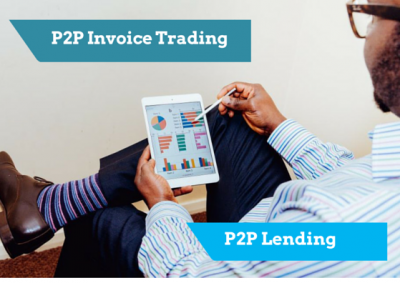
Peer to Peer Invoice Trading vs Peer to Peer Lending
Peer to Peer Invoice Trading vs. Peer to Peer Lending
Recently, peer to peer (P2P) investing scene (both peer to peer invoice trading and lending) has become a very attractive investment for both retail and accredited investors. The high volatility of the stock market and very low interest rate climate offered by Banks are contributing factors to this shift .
We have seen the dramatic rise of P2P trading platforms all over the world in the last 5 years. P2P lending in the UK alone is a £1.4 billion industry and P2P Invoice Trading alone accounts for £700 million. This alternative investment has given individual / institutional investors access to a new asset class which previously was inaccessible. In this article we will explore the similarities and differences between P2P invoice Trading and P2P Lending.
Similarities between Peer to Peer Invoice Trading vs. Peer to Peer Lending
- Online platform
Both P2P Invoice Trading and P2P Lending connects borrowers and alternative lenders via an online platform. The advent of the internet allows borrowers to reach out to a multitude of investors thus allowing the borrower to bypass its traditional lender which were the Banks.
- Credit Worthiness Checks
Both these P2P platforms conduct credit worthiness assesement and audit of the borrowers. The platforms do not provide the actual funds to borrowers, only act as a facilitator.
- Attractive returns
Lenders/Investors (both individual and institutional) are able to earn attractive returns.
- Risk diversification
Lenders/Investors can choose to vary their investment from as low as 1% to investing 100% of a particular loan or invoice. The investor can also choose to invest into multiple loans/invoices to diversity its risk portfolio
Differences between peer to peer Invoice Trading vs. peer to peer Lending
- Securities
Cash advances made by Investors of P2P Invoice Trading are secured by the Borrower’s invoice whereas for P2P Lending the loan is not backed by any security at all.
- Term or Lending Period
For P2P Invoice Trading typically the credit period is between 30-90 days. On the other hand for P2P Lending the loan period is generally much longer and is between 12-36 months
- Return structure
Investors receive their return at the end of the term for P2P Invoice Trading. But for P2P Lending the returns are paid monthly.
- Risks
Investors are taking on the risks associated with the invoice’s debtor rather than the borrower itself. But for P2P the risks are mainly associated with the borrower.
Reference
Related Articles

Alternative Financing for Businesses in Singapore: Exploring Diverse Funding Options

Navigating the Path to Invoice Financing: How to Choose the Right Invoice Finance Company for Your Business
